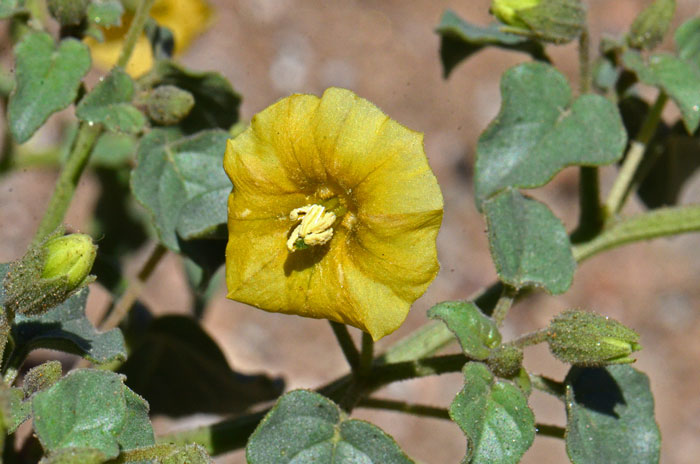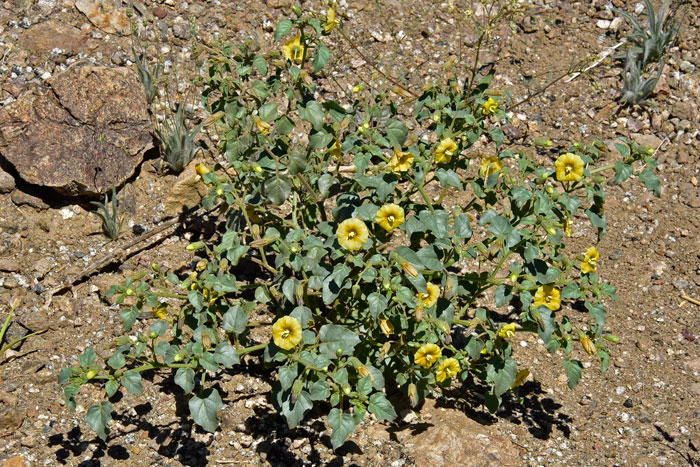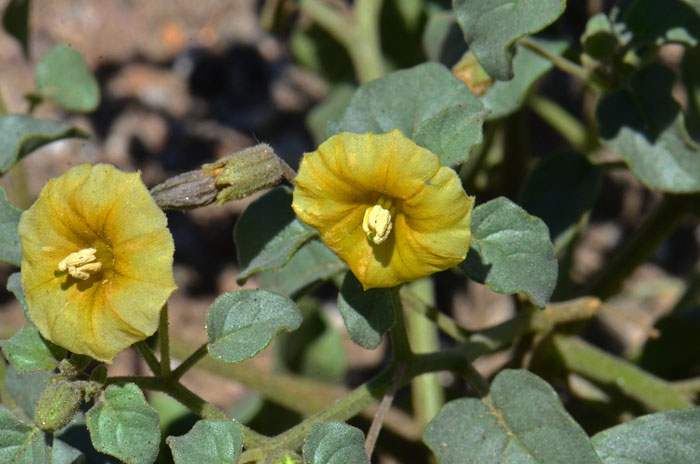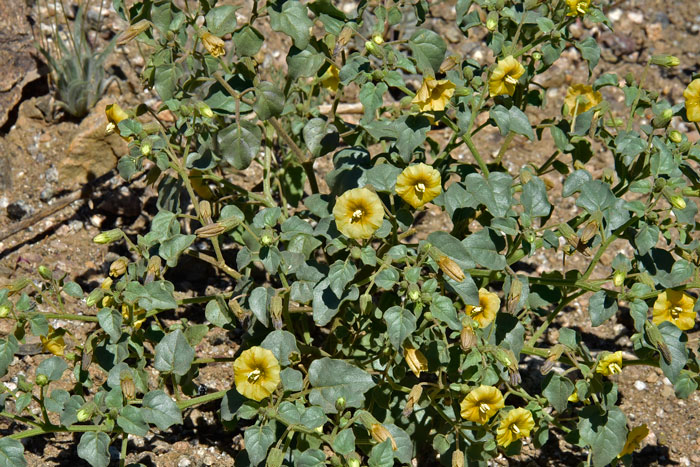Physalis crassifolia, Yellow Nightshade Groundcherry




Scientific Name: Physalis crassifolia
Common Name: Yellow Nightshade Groundcherry
Also Called: Desert Ground Cherry, Thick-leafed Groundcherry, Thickleaf Groundcherry (Spanish: Tomate de Culebra, Tomatillo del Desierto, Tomatillo)
Family: Solanaceae, Nightshade or Potato Family
Synonyms: ()
Status: Native
Duration: Annual, perennial;
Size: Up to 32 inches more or less.
Growth Form: Forb/herb, subshrub; plants suffrutescent; stems zigzag; plants generally glandular.
Leaves: Green; leaves thickish, fleshy; leaves about an inch wide; margins entire to sinuate-dentate, somewhat wavy; leaves mostly ovate; leaves petioled.
Flower Color: Yellow; floral tube widely bell-shaped; corolla sometimes without an eye; anthers also yellow.
Flowering Season: February to October; March to May in California.
Elevation: 3,000 feet or lower; below 4,000 in California.
Habitat Preferences: Dry gravelly or rocky flats, slopes, washes.
Recorded Range: Yellow Nightshade is found in the southwestern United States in; AZ, CA, NV, UT. It is also native to Baja California and northern Mexico.
North America & US County Distribution Map for Physalis crassifolia.
U.S. Weed Information: No information available.
Invasive/Noxious Weed Information: No information available.
Wetland Indicator: No information available.
Threatened/Endangered Information: No information available.
In the Southwestern United States, Arizona, California and New Mexico each have 12 species of Physalis, Nevada has 4 species, Texas has 18 species and Utah has 7 species. All data is approximate and subject to taxonomic changes.
There are 2 varieties in Physalis crassifolia ;
Physalis crassifolia var. crassifolia, Yellow Nightshade Groundcherry (AZ, CA, NV, UT);
Physalis crassifolia var. versicolor, Yellow Nightshade Groundcherry (AZ, CA, NV).
Comments: In Southwest Desert Flora please also see; Sharpleaf Groundcherry, Physalis acutifolia, Ivyleaf Groundcherry, Physalis hederifolia and Husk Tomato, Physalis pubescens.

